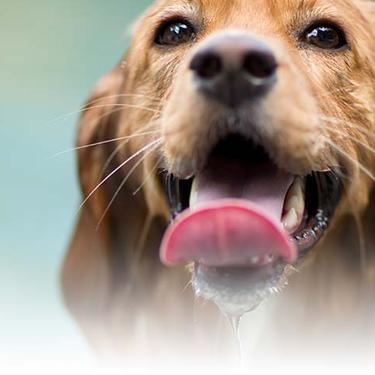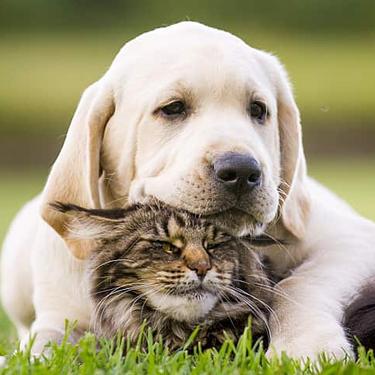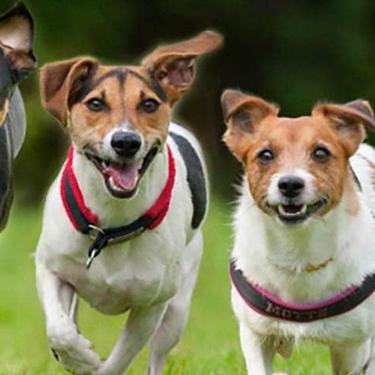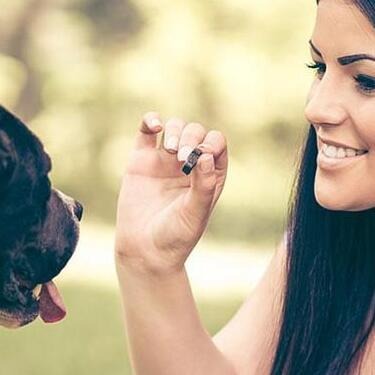
-
Find the right food for your pet
Take this quiz to see which food may be the best for your furry friend.
Find the right food for your pet
Take this quiz to see which food may be the best for your furry friend.
Featured products
 Adult Perfect Weight & Joint Support Chicken Recipe Dry Dog Food
Adult Perfect Weight & Joint Support Chicken Recipe Dry Dog FoodThis weight management and mobility support dog food was created with Hill’s unique understanding of the biology of overweight dogs.
Shop Now Adult 7+ Perfect Digestion Chicken, Whole Oats & Brown Rice Recipe Dog Food
Adult 7+ Perfect Digestion Chicken, Whole Oats & Brown Rice Recipe Dog FoodScience Diet's breakthrough nutrition supports ultimate digestive well-being & healthy microbiome for dogs age 7+
Shop Now Adult 7+ No Corn, Wheat, Soy Chicken & Brown Rice Dog Food
Adult 7+ No Corn, Wheat, Soy Chicken & Brown Rice Dog FoodSupports energy level and beautiful coat in mature dogs
Shop NowFeatured products
 Adult Savory Chicken Entrée Cat Food
Adult Savory Chicken Entrée Cat FoodPrecisely balanced nutrition with the delicious taste of savory minced chicken to help fuel the energy needs of cats during the prime of their life
Shop Now Perfect Weight Salmon & Vegetable Canned Cat Food
Perfect Weight Salmon & Vegetable Canned Cat FoodOver 70% of cats lost weight within 10 weeks when fed this nutrition
Shop Now Adult Perfect Digestion Chicken, Barley & Whole Oats Recipe Cat Food
Adult Perfect Digestion Chicken, Barley & Whole Oats Recipe Cat FoodScience Diet's breakthrough nutrition supports ultimate digestive well-being & healthy microbiome
Shop Now -
Dog
- Dog Tips & Articles
-
Health Category
- Weight
- Food & Environmental Sensitivities
- Urinary
- Digestive
- Joint
- Kidney
-
Life Stage
- Puppy Nutrition
- Adult Nutrition
- Senior Nutrition
Cat
- Cat Tips & Articles
-
Health Category
- Weight
- Skin & Food Sensitivities
- Urinary
- Digestive
- Kidney
-
Life Stage
- Kitten Nutrition
- Adult Nutrition
Featured articles
 Pet Food Storage Tips
Pet Food Storage TipsDiscover how and where to store your dry, as well as canned, dog and cat food. Learn how to find the "best before" dates on all Hill's pet food packaging.
Read More Water
WaterDiscover why water is the most important nutrient for your dog or cat to live a healthy life. Find out how much water your pet should consume each day.
Read More The Incredible Science Behind Your Pet's Microbiome
The Incredible Science Behind Your Pet's MicrobiomeLearn what a pet's microbiome is, how it contributes to your pet's gut & overall health, and why nutrition is important in maintaining healthy microbiomes.
Read More -
Find the right food for your pet
Find the right food for your pet


Dog diapers can be a useful accessory for pet parents of a dog that is prone to accidents. Using a dog diaper to assist in house training is only one circumstance in which your dog may need to wear a diaper in his lifetime. Keep reading to learn how to use dog diapers and which type might be best for your pooch.
What Is a Dog Diaper?
A dog diaper is exactly what it sounds like: a wearable cover for your pooch's hindquarters that he can relieve himself in if he needs to. There are two styles available: Male dog diapers typically include belly bands that wrap around the midsection, while female dog diapers are more full-coverage and typically have a hole cut out for the tail. This style is also good for pups that have trouble controlling their bowels.
Both styles also come in either reusable cloth or disposables, and each style has pros and cons. While disposable dog diapers are more convenient, the financial and environmental costs can really add up if your dog needs diapers for a long time. Cloth diapers tend to be messier and may cost more up front, but over time you'll save money and reduce waste.

Why Use a Dog Diaper?
There are a number of reasons why you may need to learn how to use dog diapers:
- Urinary incontinence: This could be caused by a number of health issues and is sometimes a problem as dogs age and lose muscle control. Incontinence should not be confused with behavior-related lapses in house training, and could be a sign of illness, including a urinary tract infection or diabetes. If your dog has a lot of accidents, you should take him to the veterinarian as soon as possible to check for health issues and get him proper treatment. In the meantime, a diaper can protect your rug and furniture and give you peace of mind while you and your vet work to get the problem under control.
- Illness or injury: Some dogs are unable to go outside or stand to relieve themselves while recovering from an illness or injury. A diaper can help make your dog's recuperation more comfortable for both of you.
- Elderly dogs: As some dogs age, they lose the ability to control when they go. Other elderly dogs have difficulty standing or going outside due to arthritis and joint pain. Another fairly common ailment in senior dogs is canine cognitive dysfunction, a condition similar to Alzheimer's in humans, which the Massachusetts Society for the Prevention of Cruelty to Animals notes can cause a dog to forget his house training. A diaper could help prevent accidents in any of these cases.
- Medications: Some medications can cause drastically increased urination, writes the Tufts Cummings Veterinary Medical Center. One example is furosemide, a diuretic commonly used to treat congestive heart failure. Rather than trying to keep up with your dog's frequent urges and making sure he goes where he's supposed to, a diaper might make life easier for the two of you.


Tasty Tips
How to Use Dog Diapers
Follow these guidelines to make wearing a diaper as comfortable and effective as possible for your pup:
- Start by researching the best type of diaper for your dog's needs. Consider factors, such as your lifestyle and budget, whether your dog needs full coverage or just a belly band, and how much absorbency your dog requires.
- Once you've chosen a diaper, carefully read and follow the directions for measuring your dog to find the right size and fit.
- Check the diaper frequently and change it as soon as you see that your dog has gone in it. Leaving a wet or soiled diaper on your dog for too long will not only make him uncomfortable, but can also cause a rash or bacterial infection.
- When changing your dog, wear gloves to prevent you from touching his waste. Use disposable baby wipes to clean your dog, and be sure to wash your hands thoroughly with soap and water when you're finished.
- Let your vet know if you notice signs of a rash, including redness or inflammation, itching, scratching or biting the affected area. Follow your vet's recommendations for treating the rash.
- If you're using a full-coverage dog diaper on a dog with a very short tail or no tail, be sure to cover the tail hole with tape.

Using Diapers to Help with House Training
Dog diapers can also be useful for helping to save your carpet while your dog is learning where to go. While this can be convenient for pet parents, it really has no benefit for your dog, nor does it change the need to take your dog outside frequently and show him where he's supposed to go. Diapers are not a substitute for careful and persistent house training.
If you decide to use a diaper while house training your pup, you should watch closely for signs that he's going in the diaper and immediately take him outside, says Up for Pups. Remove the diaper and show him where to go, and use treats and praise for reinforcement when he goes where he's supposed to.
While your dog could go his entire life without ever wearing a diaper, a lot can happen over his lifetime that could make diapers a necessity, if only for a short while. If you know how to use dog diapers properly, you'll be ready to help your dog stay comfortable if he ever needs one.


Jean Marie Bauhaus is a pet parent, pet blogger, and novelist from Tulsa, Oklahoma, where she usually writes under the supervision of a lapful of fur babies.
Related products

This weight management and mobility support dog food was created with Hill’s unique understanding of the biology of overweight dogs.

Delicious braised beef paired with tender vegetables in a succulent stew

Supports energy level and beautiful coat in mature dogs

Science Diet's breakthrough nutrition supports ultimate digestive well-being & healthy microbiome for dogs age 7+
Related articles

Learn about Hill's puppy food and the nutritional benefit & high quality ingredients that it contains for your pup.

Understand the role that Omega-6 and Omega-3 fatty acids play in your dog's overall health, and how you can ensure they are getting enough.

Large and giant breed puppies have different nutritional needs than other dogs. Learn how to provide the special care they need to grow up big and strong.

Proper nutrition for your pregnant or nursing dog is vital to her and her puppy's health. Learn what you should do provide her with the proper nutrients.

Put your dog on a diet without them knowing
Our low calorie formula helps you control your dog's weight. It's packed with high-quality protein for building lean muscles, and made with purposeful ingredients for a flavorful, nutritious meal. Clinically proven antioxidants, Vitamin C+E, help promote a healthy immune system.
Put your dog on a diet without them knowing
Our low calorie formula helps you control your dog's weight. It's packed with high-quality protein for building lean muscles, and made with purposeful ingredients for a flavorful, nutritious meal. Clinically proven antioxidants, Vitamin C+E, help promote a healthy immune system.

